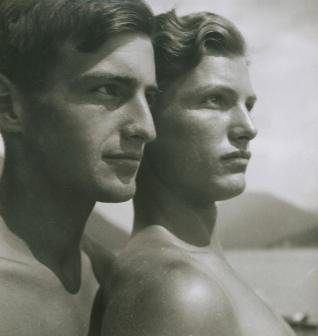Rudolf Koppitz
dal 11/6/2015 al 19/9/2015
Segnalato da
11/6/2015
Rudolf Koppitz
Musee Nicephore Niepce, Chalon-sur-Saone
1884-1936. The exhibition brings together almost 130 photographs and documents. The photographic work of the artist magnifies the body in movement in elegant compositions that have become iconic in the history of photography.

Heir to the Viennese Jugendstil and Pictorialism, the photographic work of Rudolf Koppitz [1884-1936] magnifies the body in movement in elegant compositions that have become iconic in the history of photography. The “Rudolf Koppitz [1884-1936]” exhibition is the first big retrospective of the photographer’s work in France. It was curated by the Photoinstitut Bonartes, Vienna and brings together almost 130 photographs and documents in one unique exhibition at the musée Nicéphore Niépce.
In 1929, the first ever article on art photography was published in the Encyclopaedia Britannica . The illustration used was a photo by Rudolf Koppitz, Movement Study : we see three women draped in black in front of whom is a fourth young woman, nude, leaning backward in an elegant and controlled stance. This photo has since become a veritable icon for the way it incarnates art photography and seems to come from another time when modernity was expressed through the Nouvelle Vision and Surrealism. It was in this context nevertheless that Rudolf Koppitz [1884-1936] would become one of the main figures of Viennese pictorialism. This international movement came to be in the 1880s with groups of rich amateurs in clubs claiming the status of art for photography as a whole. To do so, it put the emphasis on what it referred to as “noble” forms of printing, inspired by painting and the graphic arts: pigmented prints, using gum bichromate, oil… The pictorialists refused the purely mechanical reproduction of the real by stylising, interpreting, blurring…
Koppitz was one of the representatives of this aesthetic. His position as teacher then director of the photographic department at the Vienna Graphische Lehr- und Versuchsanstalt [ The Institute for applied graphic arts] allowed him to exercise an influence on Viennese photographic output in general. He participated in a number of exhibitions and this, as well as presiding over selection committees, conferred a certain authority on him in art photography circles. Koppitz’s themes throughout his life are evidence of his predilection for nature and physical exercise, with an attachment to the principles of naturism that appeared at the start of the century. His depiction of nudes, including of his own body, reflected an aesthetic quest for strength and purity.
In the early thirties, Koppitz shifted away from pictorialism and adopted a more documentary, but still carefully staged style. He travelled the countryside in search of peasant authenticity. These images of the Austrian “Heimat” became popular at a time when there was an attempt to increase tourism: the State wished to depict an ideal homeland, a country of beautiful Alpine landscapes, and keeper of traditions.
[The term “Heimat” has no real equivalent in English. It reflects the notion of the homeland, native land, country, but also evokes a place that feels like “home”].
Koppitz’s aesthetic vocabulary was adopted by the Austro-fascist powers and the supporters of National Socialism. Koppitz’s own political opinions remain unclear, he died two years before the Anschluss. We are more familiar with those of his wife Anna, also a photographer and his assistant, who took a number of shots of Austrian and German youth that are aesthetically reminiscent of the work of Leni Riefenstahl. She continued to exploit her husband’s work after 1936 and by associating her own photos and her links to the Nazi regime doubtless contributed to damaging Koppitz’s reputation in the long term. Was Rudolf Koppitz naive or merely guided by his artistic and aesthetic quest? His works have a timeless and theatrical beauty that earned him the praise of his peers and a level of popularity for his nudes and dance photographs that has lasted until now.
Image: Rudolf Koppitz, The Brothers, circa 1930, Silver print 17.9 x 17 cm (Photoinstitut Bonartes, Vienna)
Press contact:
Emmanuelle Vieillard communication.niepce@chalonsursaone.fr
Opening: 12 Jun 2015 19h:00
Musee Nicephore Niepce
28 quai des Messageries
Chalon-sur-Saone Francia



